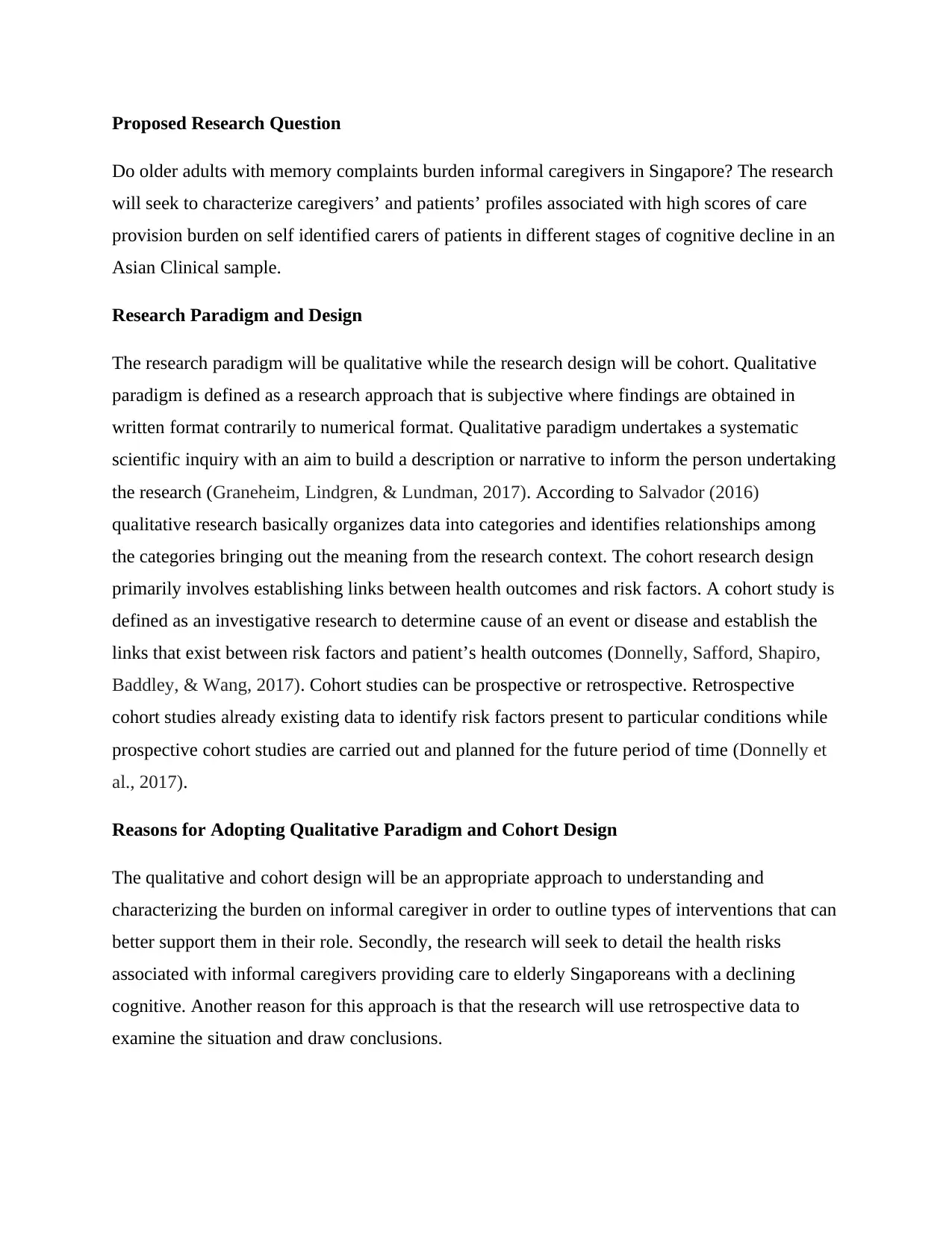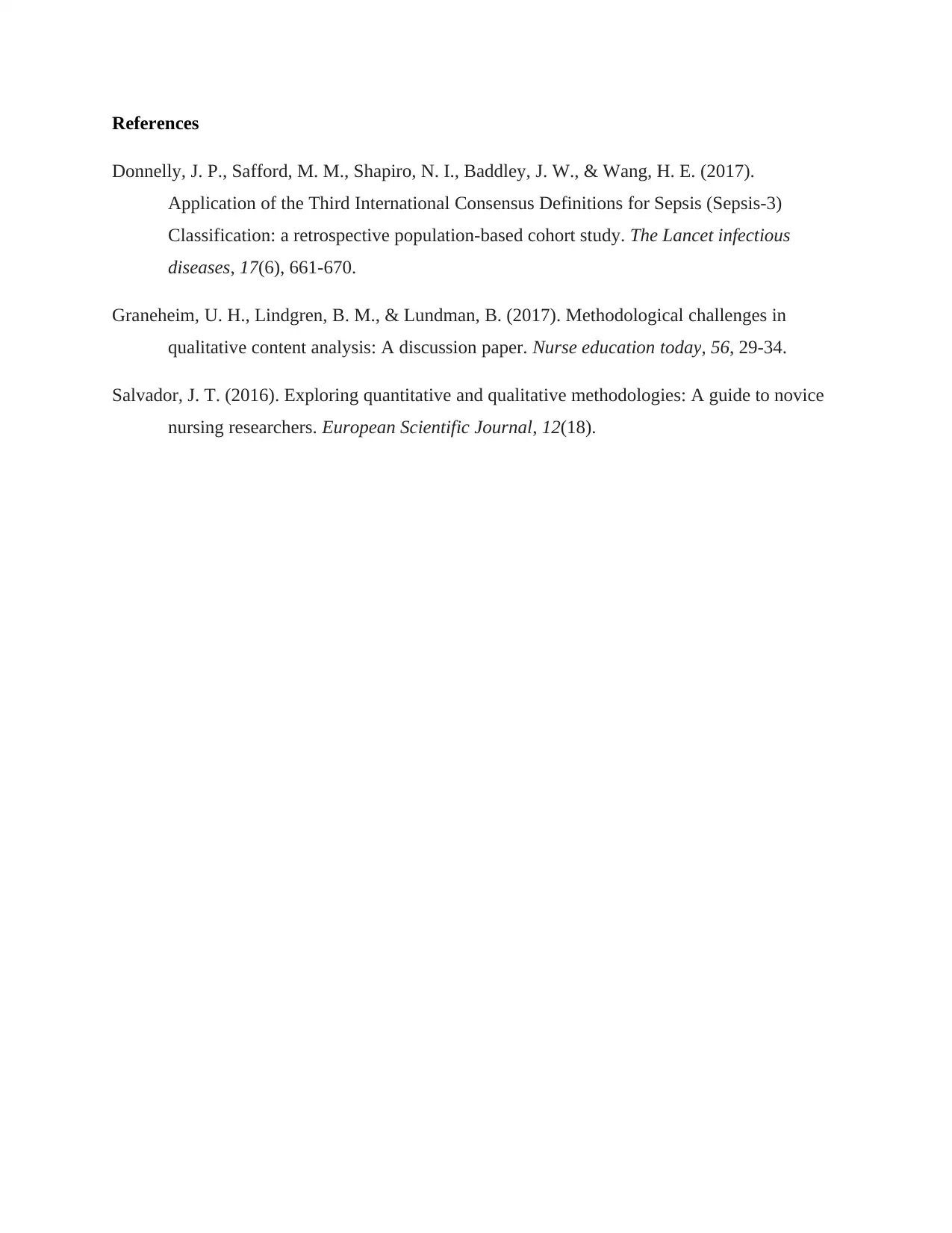NSG2NMR Assessment 1 (2019): Research Question, Paradigm, Design
VerifiedAdded on 2022/10/12
|2
|482
|36
Homework Assignment
AI Summary
This assignment presents a research question exploring the burden on informal caregivers of older adults with memory complaints in Singapore. The research employs a qualitative paradigm and a cohort design to characterize caregivers' and patients' profiles associated with high care provision burden. The student justifies the selection of a qualitative approach, emphasizing its suitability for generating descriptive narratives, and the cohort design for examining links between health outcomes and risk factors. The study plans to use retrospective data to draw conclusions about the challenges faced by caregivers of elderly Singaporeans with cognitive decline, aiming to inform interventions that support caregivers in their roles and mitigate the health risks associated with caregiving. The paper references relevant literature to support the methodological choices.
1 out of 2


![[object Object]](/_next/static/media/star-bottom.7253800d.svg)